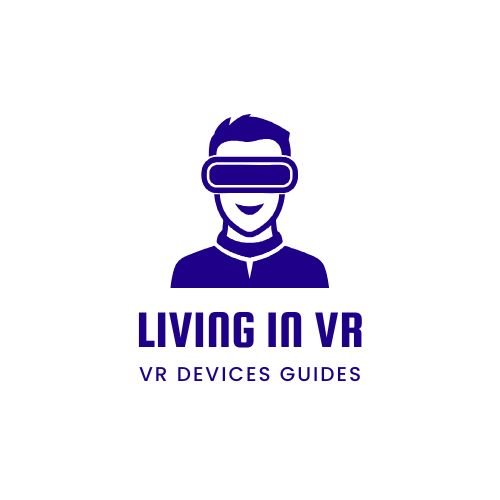You’re experiencing multiplayer metaverse environments powered by an intricate web of 5G networks, edge computing systems, and cloud infrastructure that work together to deliver seamless virtual interactions across millions of concurrent users. Major cloud providers like AWS and Microsoft Azure handle massive computational loads through containerized microservices, while edge computing processes data closer to your device for ultra-low latency below 1 millisecond. Advanced fiber-optic networks support data transfer rates exceeding 10 Gbps, ensuring high-quality graphics and persistent virtual worlds can accommodate your real-time avatar movements and voice communications without performance bottlenecks—and there’s much more happening behind these sophisticated systems.
The Architecture Behind Multiplayer Virtual Worlds

The foundation of multiplayer virtual worlds rests on a sophisticated blend of cloud computing, edge computing, and decentralized technologies that work together to support massive environments with thousands of concurrent users.
You’ll find that cloud computing handles the heavy computational lifting, while edge computing brings processing closer to you for reduced latency. High-speed networks like 5G guarantee your real-time interactions remain seamless and responsive.
When you’re traversing these virtual spaces, blockchain technology secures your digital asset transactions and ownership.
Solutions like MetaGravity’s Quark Multiplayer demonstrate true scalability by supporting millions of players through decentralized computing resources.
MetaGravity’s Quark Multiplayer showcases revolutionary scalability, enabling millions of simultaneous players through innovative decentralized computing architecture that redefines virtual world possibilities.
Interoperability becomes vital as you move between different platforms, requiring standardized protocols that enable smooth shifts across diverse virtual worlds and applications.
5G Networks and Ultra-Low Latency Gaming
While traditional networks struggle with the demanding requirements of multiplayer metaverse environments, 5G networks revolutionize ultra-low latency gaming by delivering the lightning-fast connectivity that’s essential for seamless real-time interactions.
You’ll experience immersive experiences where milliseconds matter – even slight delays can disrupt gameplay dynamics and break immersion in virtual worlds.
With 5G’s ultra-low latency capabilities, you can engage in multiplayer gaming with thousands of concurrent players without experiencing lag. The technology supports data transfer rates exceeding 10 Gbps, enabling high-quality graphics and smooth interactions.
You’ll access larger, more persistent virtual worlds that accommodate millions of users simultaneously. Future 5G-Advanced developments will further enhance connectivity, ensuring you’ll enjoy increasingly sophisticated metaverse experiences with unparalleled performance and responsiveness.
Edge Computing Solutions for Real-Time Interactions

Building on 5G’s ultra-low latency foundation, edge computing solutions transform real-time interactions by bringing processing power directly to your location.
You’ll experience dramatically reduced latency as data gets processed closer to you rather than traveling to distant centralized servers. This distributed approach supports thousands of concurrent players in multiplayer environments without typical performance bottlenecks.
Edge computing enables large, persistent virtual worlds that dynamically adapt to your actions in real-time.
You’ll notice immediate feedback in immersive environments where split-second responses determine your gaming experience. Companies like MetaGravity demonstrate this technology’s potential, optimizing platforms to handle millions of simultaneous users seamlessly.
This decentralized infrastructure guarantees smooth gameplay experiences essential for maintaining engagement in complex metaverse environments.
Cloud Infrastructure Powering Persistent Virtual Environments
Beyond edge computing’s localized processing power, cloud infrastructure forms the backbone that sustains persistent virtual environments across the metaverse.
You’ll find major providers like AWS, Microsoft Azure, and Google Cloud delivering scalable solutions that handle millions of concurrent users seamlessly. Their real-time data processing capabilities guarantee your immersive experiences remain uninterrupted, whether you’re exploring vast digital worlds or engaging in complex multiplayer scenarios.
You’re witnessing innovative approaches like MetaGravity’s Quark Multiplayer, which leverages decentralized cloud resources to support thousands of simultaneous players.
Modern cloud infrastructure increasingly relies on containerization and microservices architecture, giving you flexible platforms that deploy rapidly and scale efficiently. This technological foundation enables the creation of truly persistent virtual environments that maintain continuity across sessions.
Fiber-Optic Backbone Systems Supporting Massive Data Transfer

The cloud infrastructure’s power means nothing without the fiber-optic backbone systems that carry its massive data streams across continents.
These glass fiber networks deliver the high-speed connectivity you need for seamless multiplayer metaverse experiences, transmitting light signals at speeds exceeding 1 Gbps.
When you’re exploring immersive experiences with thousands of other users, fiber-optic systems guarantee three critical capabilities:
- Ultra-fast data transmission for rendering complex virtual environments in real-time
- Minimal latency that prevents disruptive delays during interactions
- Massive bandwidth capacity supporting VR and AR applications simultaneously
As global investments expand these networks, you’ll experience smoother virtual worlds where even minor delays become extinct.
Without this fiber-optic foundation, today’s multiplayer metaverse simply couldn’t function at scale.
Content Delivery Networks for Global Metaverse Access
You’ll need robust CDN infrastructure that spans continents to deliver metaverse content at the scale and speed users expect.
Your network must optimize global latency through strategic server placement and intelligent routing algorithms that minimize data travel time.
You can’t achieve true real-time performance without integrating edge computing capabilities that process data closer to users rather than relying solely on distant data centers.
CDN Infrastructure Requirements
When building a multiplayer metaverse that serves millions of users worldwide, you’ll need robust CDN infrastructure that can handle unprecedented bandwidth demands and deliver content with lightning-fast speed.
Your infrastructure must support up to 10 Gbps per user for high-quality immersive experiences.
Essential CDN infrastructure requirements include:
- Global edge locations – You’ll need strategically positioned servers that cache 3D models and textures closer to users, dramatically reducing load times.
- Advanced edge computing capabilities – Your system must incorporate real-time analytics to dynamically adapt traffic patterns and optimize resource allocation.
- 5G network integration – You’ll achieve ultra-low latency essential for seamless real-time interactions among concurrent users.
This infrastructure guarantees your metaverse delivers consistent, lag-free experiences regardless of geographic location.
Global Latency Optimization
As metaverse applications demand sub-20ms response times for seamless user interactions, global latency optimization becomes your most crucial performance factor.
Content Delivery Networks strategically position servers worldwide to minimize the distance your data travels, markedly reducing lag in immersive applications. When you’re engaged in multiplayer interactions, CDNs leverage edge computing to cache content closer to your location, ensuring the real-time experience essential for seamless gameplay.
Major providers like Akamai and Cloudflare offer specialized services designed for high-demand virtual environments.
Research shows that even 100ms delays considerably impact your satisfaction and retention rates. As the metaverse expands, robust CDN infrastructure becomes increasingly essential, with the global market projected to reach $37.4 billion by 2028, driven by multiplayer environment demands.
Edge Computing Integration
Edge computing transforms how CDNs deliver metaverse content by processing data at network peripheries rather than distant central servers.
You’ll experience dramatically reduced latency as your avatar movements, voice communications, and environmental interactions happen instantaneously.
This distributed approach enables three critical advantages:
- Scalable multiplayer support – Thousands of concurrent players can share virtual spaces without performance degradation.
- Seamless reality shifts – You’ll move effortlessly between augmented and virtual environments.
- Enhanced data processing – Complex calculations happen closer to your device, improving responsiveness.
With 5G technology integration, edge computing becomes essential for your immersive experience.
You’re no longer limited by centralized server bottlenecks. Instead, distributed computing resources work together, ensuring your real-time interactions remain smooth and engaging across global metaverse networks.
Peer-to-Peer Networking in Decentralized Virtual Spaces
While traditional multiplayer games depend on centralized servers to coordinate player interactions, peer-to-peer (P2P) networking revolutionizes decentralized virtual spaces by enabling direct communication between users’ devices.
This approach distributes workload across multiple users, dramatically enhancing scalability for multiplayer experiences. You’ll experience reduced latency and improved responsiveness since data packets travel directly between players rather than through central hubs.
MetaGravity’s Quark Multiplayer framework demonstrates P2P’s potential, supporting up to 1 million concurrent users in single game instances.
However, you’ll face security and privacy challenges in these decentralized networks. User-generated content and interactions require robust protection against malicious activities and unauthorized access, making security protocols essential for maintaining safe virtual environments.
WebRTC Protocols for Seamless Avatar Communication
Building upon P2P networking foundations, WebRTC (Web Real-Time Communication) protocols transform how avatars interact within decentralized virtual spaces by establishing direct browser-to-browser connections.
You’ll experience seamless real-time communication without intermediary servers slowing down your interactions.
WebRTC enhances your metaverse experience through three key capabilities:
- Low-latency audio and video streaming that makes conversations feel natural and immediate
- Direct data sharing between avatars for collaborative activities and shared virtual experiences
- Cross-platform compatibility across major browsers and devices for universal accessibility
When you’re gaming or socializing in multiplayer environments, WebRTC’s high-quality streaming creates truly immersive interactions.
You can engage in voice chat, live streaming, and real-time collaboration that responds instantly to your actions, making every virtual encounter feel authentic and engaging.
Blockchain Networks Enabling Virtual Asset Transactions
You’ll gain unprecedented control over your virtual possessions when blockchain networks establish decentralized asset ownership in metaverse environments.
These networks eliminate central authorities by storing ownership records directly on distributed ledgers, ensuring you truly own your digital items rather than merely licensing them from game developers.
Smart contract integration automates transactions and enforces ownership rules, letting you trade assets seamlessly while maintaining security and transparency across different virtual worlds.
Decentralized Asset Ownership
As metaverse platforms evolve into complex digital economies, blockchain networks have revolutionized how you can own and transfer virtual assets. Unlike traditional gaming where you’re limited by platform restrictions, decentralized asset ownership gives you true control over your digital belongings through Non-Fungible Tokens and smart contracts.
Blockchain technology enables three key ownership advantages:
- Permanent ownership – Your NFTs remain yours regardless of platform changes.
- Cross-platform transferability – Move assets between compatible metaverse environments.
- Transparent transactions – All ownership records exist on public blockchain ledgers.
Platforms like Decentraland and The Sandbox demonstrate this revolution in action.
Virtual real estate markets have generated millions in trading volumes, with Ethereum supporting secure, fraud-resistant transactions. You’re no longer just renting digital space—you’re building genuine wealth in virtual worlds.
Smart Contract Integration
When you execute a transaction in a metaverse environment, smart contracts automatically handle the entire process without requiring traditional intermediaries like banks or payment processors. These blockchain-powered protocols guarantee your virtual assets maintain verified ownership and transparent transaction histories across networks like Ethereum.
You’ll find decentralized applications operating seamlessly within virtual worlds, enabling direct peer-to-peer exchanges of NFTs, virtual real estate, and in-game items. Platforms like Decentraland and The Sandbox demonstrate how blockchain networks integrate smart contracts to govern user interactions while maintaining security and transparency.
Your unique in-game items become tradeable for real-world currency, fundamentally reshaping gaming economies.
Smart contracts also power virtual real estate markets, allowing you to purchase, develop, and sell digital land using cryptocurrencies, creating legitimate economic opportunities within these virtual environments.
Software-Defined Networking for Dynamic Resource Allocation
Software-Defined Networking (SDN) revolutionizes how multiplayer metaverse platforms manage their infrastructure by centralizing network control and enabling real-time resource allocation.
You’ll find that SDN transforms your network management approach by allowing dynamic adjustments as player demand fluctuates across immersive environments.
Here’s how software-defined networking enhances your metaverse operations:
- Dynamic bandwidth allocation – You can adjust connectivity settings in real-time, ensuring low latency for thousands of concurrent players.
- Application-specific virtual networks – You’ll prioritize traffic for critical services like gaming and social interactions within tailored network segments.
- Enhanced interoperability – You’ll achieve seamless integration across diverse metaverse platforms while reducing operational costs.
This centralized control minimizes physical hardware changes when scaling, making your virtual environments more efficient and cost-effective.
Hybrid Network Architectures Optimizing Performance
While software-defined networking provides centralized control, hybrid network architectures take performance enhancement further by strategically combining traditional data centers with decentralized edge computing nodes.
You’ll experience improved scalability as hybrid networks distribute computing resources closer to your location, minimizing latency for real-time interactions among thousands of concurrent users. These architectures maintain high-quality graphics and immersive experiences even in massive, persistent virtual worlds.
When you’re gaming, 5G integration becomes vital for achieving ultra-low latency and meeting high bandwidth demands.
You’ll notice seamless interoperability between platforms, allowing smooth shifts between different virtual environments. By leveraging both cloud and on-premises resources, hybrid networks guarantee you get peak performance regardless of where you’re connecting from in the metaverse.
Network Security Protocols Protecting Virtual Identities
You’ll need robust encryption standards to protect your avatar’s data and interactions as you navigate virtual worlds.
Your platform should implement biometric authentication methods that verify you’re the legitimate user accessing your virtual identity.
These security measures work alongside decentralized identity verification systems that give you greater control over your personal information while maintaining privacy across multiple metaverse environments.
Encryption Standards for Avatars
As metaverse platforms become increasingly sophisticated, your avatar’s digital identity requires unprecedented protection through advanced encryption standards that safeguard everything from your virtual appearance to behavioral patterns.
These security measures guarantee that your virtual presence remains authentically yours while preventing unauthorized access to sensitive data.
Modern encryption standards for avatars operate through several key mechanisms:
- End-to-end encryption protects all communication between your avatar and others, guaranteeing that conversations and interactions can’t be intercepted by malicious actors.
- Blockchain technology secures digital asset ownership and transaction history, creating immutable records of your virtual possessions.
- Advanced cryptographic protocols maintain data privacy by encrypting personal information, behavioral data, and biometric markers associated with your avatar’s identity.
These thorough security layers work together to create a trusted metaverse environment.
Biometric Authentication Methods
Your fingertips, retina patterns, and facial geometry represent the ultimate keys to your metaverse identity, offering security that can’t be stolen, forgotten, or easily replicated.
Biometric authentication transforms how you access virtual worlds by scanning your unique physiological traits instead of relying on vulnerable passwords. This technology makes it nearly impossible for hackers to impersonate you or breach your accounts.
You’ll experience seamless logins through quick biometric scans while enjoying enhanced protection for your virtual identities. The global biometrics market’s projected growth to $48 billion by 2025 reflects this security evolution.
However, you should consider privacy concerns surrounding biometric data storage and potential algorithmic biases.
Robust data protection policies become essential as metaverse platforms collect and process your most personal biological markers.
Decentralized Identity Verification
While traditional authentication systems force you to trust centralized authorities with your most sensitive data, decentralized identity verification puts control directly in your hands through blockchain technology.
This revolutionary approach uses cryptographic protocols to enhance security and privacy, greatly reducing identity theft risks and unauthorized access.
Your digital identity seamlessly authenticates across multiple metaverse platforms without relying on centralized gatekeepers.
Here’s how the system protects you:
- Smart contracts automate validation processes, ensuring your data only reaches authorized parties
- Blockchain technology creates immutable identity records that you control completely
- Cryptographic protocols secure your personal information through military-grade encryption
This decentralized approach increases user trust considerably, fostering safer interactions throughout virtual environments while maintaining consistent digital identities across the entire metaverse ecosystem.
Bandwidth Requirements for High-Fidelity Virtual Experiences
High-fidelity virtual experiences demand substantial bandwidth to deliver the immersive content that makes metaverse interactions truly compelling.
You’ll need at least 25 Mbps per user for seamless interactions, though this requirement escalates quickly when you’re engaging with complex virtual environments. Streaming HD and VR content can push your bandwidth requirements up to 50 Mbps or higher, depending on graphical complexity.
Low latency becomes equally critical—you’ll want under 20 milliseconds to guarantee real-time responsiveness during multiplayer gameplay.
Without this combination of high bandwidth and minimal delay, your immersive metaverse applications will suffer from lag, stuttering, and degraded visual quality.
Advanced technologies like 5G and fiber optics are essential for meeting these demanding network specifications in today’s multiplayer environments.
Future Network Technologies Shaping Tomorrow’s Metaverse
Tomorrow’s metaverse will run on revolutionary network technologies that make today’s infrastructure look primitive by comparison.
5G-Advanced networks are already beginning their global deployment, promising to slash latency below 1 millisecond while delivering gigabit speeds that’ll handle multiple concurrent VR streams without breaking a sweat.
These network technologies will transform the future of the Metaverse through:
- Edge computing integration that processes your immersive virtual experiences closer to your location, eliminating frustrating delays
- Seamless platform interoperability enabling you to move assets between different metaverse worlds instantly
- Massive scalability supporting millions of concurrent users in persistent virtual environments
Technologies such as virtual reality and augmented reality will become indistinguishable from physical reality as these advanced networks eliminate the technical barriers that currently limit truly immersive virtual experiences.
Frequently Asked Questions
Which Company Is Using Metaverse?
You’ll find Meta, Epic Games, and Roblox creating immersive gaming experiences. Northumbrian Water uses AR for technician training, while Bank of America employs VR for employee development, and Decentraland enables virtual land transactions.
What Are the 4 Types of Metaverse?
You’ll encounter four main metaverse types: social platforms like Horizon Worlds for community building, gaming worlds like Fortnite combining gameplay with interaction, AR experiences overlaying digital content, and VR environments providing fully immersive experiences.
Who Is Leading the Metaverse?
You’ll find Mark Zuckerberg’s Meta leading metaverse development through VR investments, while Tim Sweeney’s Epic Games pioneers immersive gaming. Ethereum’s Crucial Buterin enables blockchain integration, and Nvidia’s Jensen Huang advances industrial applications.
Which Metaverse Platform Has the Most Users?
You’ll find Fortnite leads with around 350 million registered accounts, though Roblox dominates active engagement with over 200 million monthly users. Both platforms considerably outpace Minecraft’s 140 million monthly active users currently.





Leave a Reply